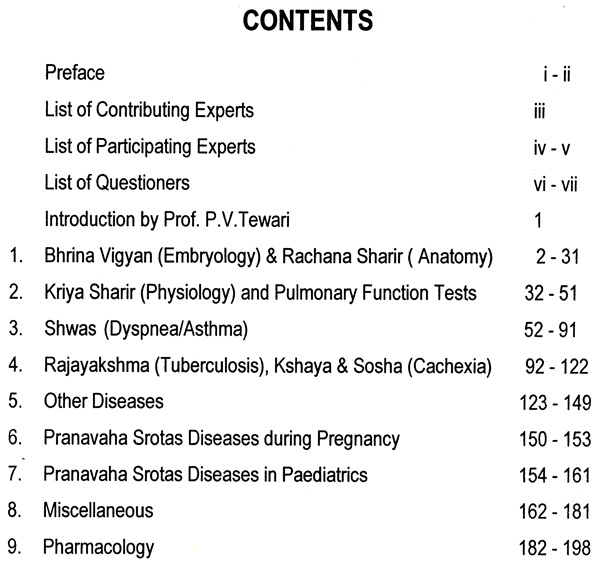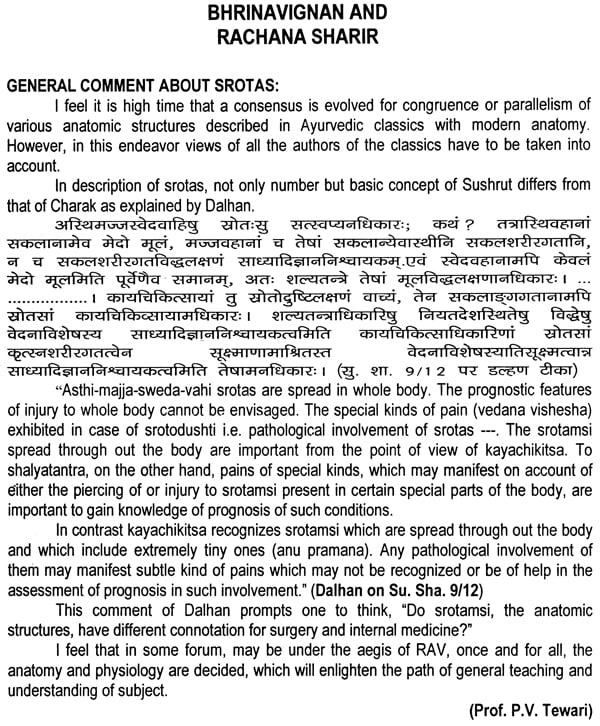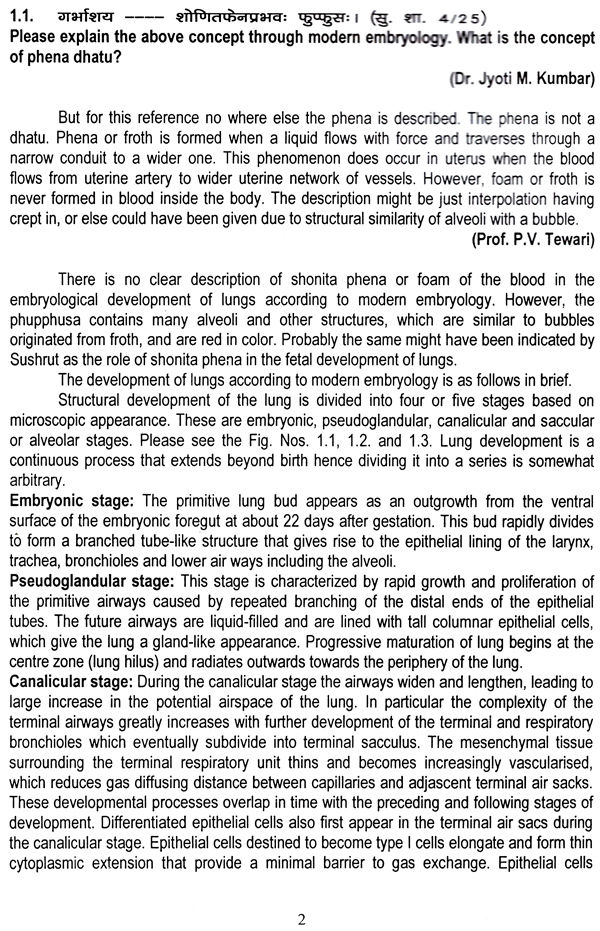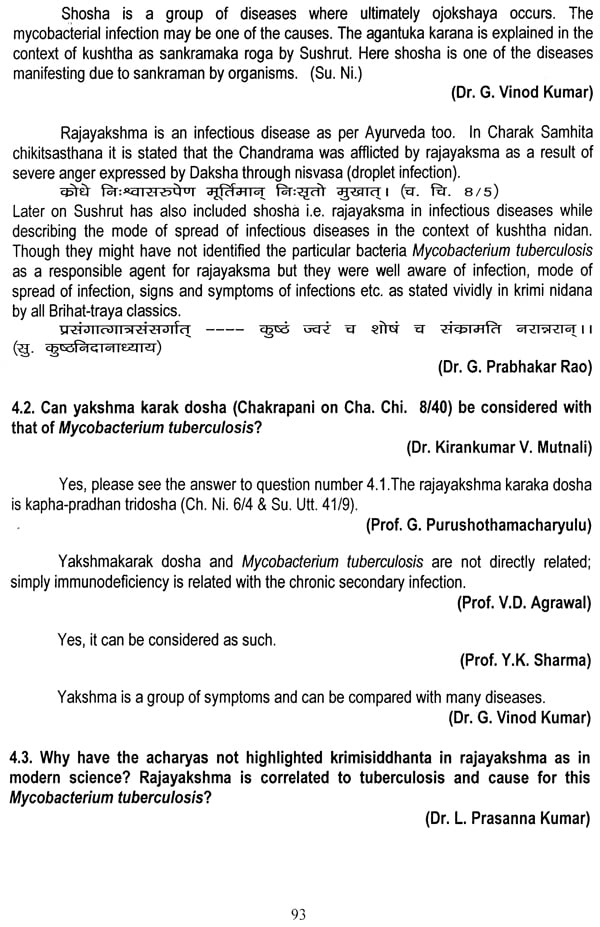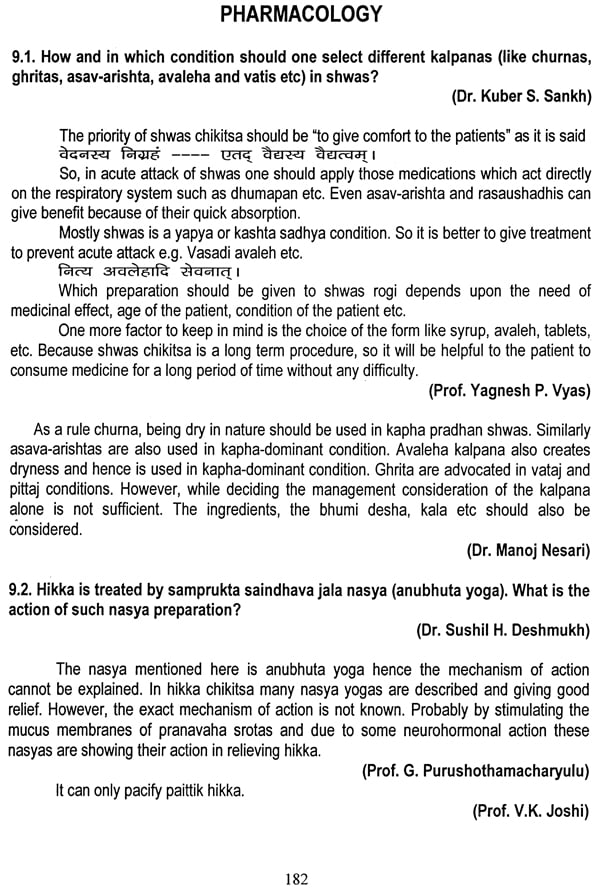
Interactive Workshop Between Students and Teachers of Ayurveda (Pranavaha Srotas Disorders and Their Management)
Book Specification
| Item Code: | NAS023 |
| Author: | Dr. V. V. Prasad |
| Publisher: | Rashtriya Ayurveda Vidyapeeth |
| Language: | English |
| Edition: | 2007 |
| Pages: | 216 (10 Color Illustrations) |
| Cover: | PAPERBACK |
| Other Details | 11.00 X 8.00 inch |
| Weight | 550 gm |
Book Description
Rashtriya Ayurveda Vidyapeeth (RAV) has been conducting Interactive Workshops for students and teachers in various subjects of Ayurveda in order to facilitate one-to-one discussions and clarifications on various issues related to teaching, practice and research. After holding workshops on different subjects, we have taken up workshops on topics, which exclusively deal with a single human physiological system along with its pathological states. This year we have decided to hold the workshop on `Pranavaha Srotas, its disorders and management':
Conducting a workshop on system-(Srotas) wise topic appears an uphill daunting task at the very first glance. But once the process gets initiated the same becomes an upbeat and intellectually stimulating activity.
The thought of Pranavaha Srotas at the very first glance exposes the view of Ayurvedic pulmonology in the form of three verses related to Pranavaha srotas by eminent scholars (Charak, Sushrut and Vagbhat), three chapters on kasa, shwasa and hikka and rajayakshma and a few verses by Sushruta on marmaghat. However, a thorough reading of these reveals the subtlety, which in turn leads to a cascading and never ending reading and understanding of classical texts and commentaries. For example the physiology of respiration appears almost non-existent in Ayurvedic texts except a verse by Shamgadhara. However, a mere understanding of pathology unfolds the complexity of entire respiratory mechanism e.g. the muscles involved in forceful expiration i.e., kasa (cough). It is quite amazing to note all this. It is immaterial to question how the ancient Ayurvedic scholars knew it. The fact remains unchangeable.
There is significant paradigm shift in understanding of Ayurvedic texts in the last 3-4 decades or so. As is usual in any faculty of science there is immense resistance in accepting such paradigm shift in understanding this ancient science with the modern scientific principles and technology.
At one end of the scientific spectrum it is the knowledge gained through observations and experiences (of the last 7000 years starting from samhita to nighantu period) and at the other end the tremendous advancements made (during a few decades) in all fields of sciences in understanding minutely the principles governing those observations. In between lie the lacunae developed due to lapse of time. When we start filling these gaps bit by bit and reach even a single destination the achievement is immense.
Even those finding difficult to infer the information from the ancient texts are now convinced to realize this ancient wisdom, when it is being proved in India and elsewhere. Rajayakshma, which a few decades ago considered to be pulmonary tuberculosis, is now readily accepted as more than that.
**Contents and Sample Pages**
